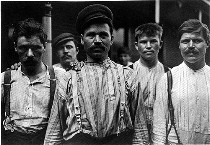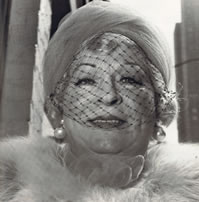
Here’s a slightly different angle on digital imaging that comes out of a couple of magazine articles I read recently. In the June, 2003 issue of the Atlantic Monthly, author Richard B. Woodward chronicles the story about some Lewis Hine photographs which came up at auction and were sold as authentic “vintage” prints made and signed by Hine but now appear to be forgeries, having been printed after the photographer’s death. It’s a good read about a smart bit of detective work on the part of a collector. (Image is Hine’s “Steelworkers at a Russian Boarding House,” circa 1908)
The article ends with a cautionary last word on digital technology from Grant Romer, head of the conservation department at George Eastman House. Quoting from Woodward’s article:
…Digital fakery, in Romer’s view, presents the “next “scary issue” for collectors. Since the invention of photography…it has been possible to photograph a positive print in order to make a negative (from which to make more positive copies), but not without a telltale loss of definition. Digital technology may soon eliminate that problem.
“From a good reproduction in a book you’ll be able to make a near flawless negative,” Romer predicts. “Right now, if I were a smart crook…I’d be making Arbuses in my basement. Will the paper fluoresce? Yes, but it’s likely that some of the prints she made herself would too. you won’t have to be a master criminal to pull this off.”

I’d just finished the Atlantic article when I saw a cover story in the NY Times Magazine, Sept. 14, 2003 with a preview by Arthur Lubow of a new Diane Arbus book, “Revelations,” a companion to the upcoming retrospective of the photographer’s work at the San Francisco Museum of Modern Art. The story includes a portfolio of never-before-published Arbus photographs …and Lubow says the new book includes works that have “never been seen (or even, in some cases, printed)”.
“Revelations” is authorized by Arbus’s daughter Doon, who is in charge of the Arbus estate. Clearly, these are not fake Arbuses or being touted as vintage prints but I found the introduction of new Arbus prints in the Times following so closely on my reading of Romer’s words about fake Arbuses somehow eerie. (Image is Arbus’s “Woman with a veil on Fifth Ave., NYC.”, 1968)









